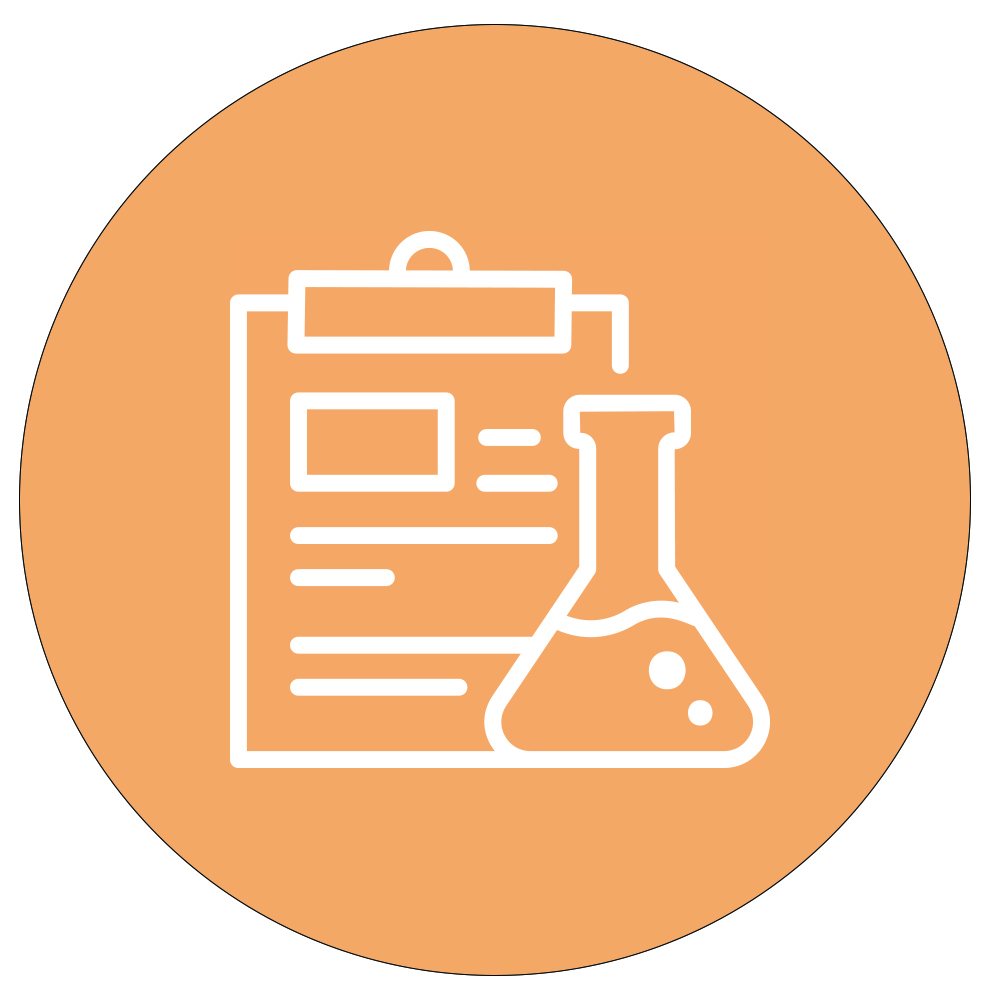Penn State College of Medicine
Strategic Plan 2020-2025
Mission
The College of Medicine (and our academic hub, Penn State Health Milton S. Hershey Medical Center) are committed to enhancing the quality of life through improved health, the professional preparation of those who will serve the health needs of others and the discovery of knowledge that will benefit all.
Vision
We will be a world leader in the transformation of health care and in the enhancement of health for people everywhere.
About the Strategic Plan
The vision, goals and foundations set forth in the Penn State College of Medicine strategy represent the most enterprising ideas and input from diverse thought-leaders at the College of Medicine, harnessed through an inclusive process that offered all faculty and staff, as well as our partners at the University and Penn State Health, a chance to make their voices heard. The goals laid out capitalize on exciting talents, resources and opportunities to rapidly advance the mission of the organization while also speeding up the positive cultural shift needed to attract, retain and produce the most talented individuals and teams in academic medicine.
Jump to topic
Search
Full 2020-2025 Plan
The full 2020-2025 College of Medicine Strategic Plan is available in OneDrive (Penn State Access ID login required).
Strategic Goals
 Translational Science
Translational Science Artificial Intelligence
Artificial Intelligence Health Systems Science
Health Systems Science Culture
Culture
The five-year goals for the College of Medicine define a bold agenda that will define the future of the organization. The goals also directly support the University’s goals and foundations and will maximize the impact of investment in the COM as a vehicle to increase the reputation of the University as a premier health care education and research institution. Over the next five years, the COM will:
- Discovery and Translational Science – Become a recognized leader in discovery and translational sciences through unlocking the complex interactions of genetics, biological processes, socio-economics and life circumstances to improve understanding of human health and mechanisms of disease.
- Biomedical Artificial Intelligence – Develop and apply the biomedical artificial intelligence, neural engineering, machine learning and informatics capabilities needed to make rapid advances in biomedical research, education, health outcomes and value-based patient care.
- Health Systems Science – Develop future health care professionals and scientists who draw on the best practices of the humanities and biomedical and health systems sciences to enhance health and community impact.
- Enhancing Our Culture of Excellence – Continually improve our culture; one that is inclusive, safe, respectful and supports the well-being and professional development of learners, staff and faculty.
Goal One will be accomplished through the creation of the Center for Comprehensive Health Studies, and by attracting interdisciplinary teams of scientists and clinicians to solve some of the most complex problems in medicine. Our goal is to understand the biological, sociological and environmental contributions to health, human adaptation to stress, mechanisms of resilience and healthy aging as the keys to unlocking common pathways of diseases that have the greatest burden on health and quality of life, and greatest burden on society, such as cancer, cardiovascular disorders, infectious diseases and neurodegeneration. These challenges cannot be solved by just one specialty alone. Interdisciplinary research across the continuum of basic/lab, translational/animal models, clinical/patient-based and community/societal/policy (including health equity) is the best way to understand and address the complex nature of disease and overall health. Additionally, this center will provide a critical tool for COM, Penn State and Penn State Health to help address health equity challenges.
View Comprehensive Health Studies Program
Leadership
Interim director: Cynthia Chuang, MSc, MD
Kenneth V. and Eleanor M. Hatt Faculty Fellow in Internal Medicine and professor of medicine, public health sciences and obstetrics and gynecology
Chief, Division of General Internal Medicine
Interim associate director: Amy Arnold, PhD
Associate professor of neural and behavioral sciences
Goal Two will be realized through the creation of the Center for Biomedical Data Sciences which will collaborate with researchers across the University, as well as clinicians from Penn State Health, to build unique tools and data sets that can answer complex questions needed to advance biomedical research and health outcomes. Penn State has tremendous resources in artificial intelligence (AI) and computational sciences that can be applied to health and health care in exciting and groundbreaking ways. To do so, we will create and implement a biomedical informatics infrastructure (algorithms, faculty/staff, computation power, custom tools and partnerships) to address the complex research problems present in individualized patient care and populations of care. Long-term goals include eliminating health disparities and transforming access to care by leveraging Penn State-wide strengths in digital innovation, computational and data sciences, population health, translational research and clinical care networks.
Leadership
Interim director: Dajiang Liu, PhD, MA
Professor of public health sciences, biochemistry and molecular biology
Goal Three will create the Center for Health System Sciences, which will improve health by addressing major challenges faced by Penn State Health, surrounding communities and the Commonwealth of Pennsylvania by using health systems sciences (inclusive of data analytics) as the primary approach. The Center for Health System Sciences will demonstrate how the principles of systems thinking, clinical informatics, collaborative co-production of key initiatives with Penn State Health and Penn State University, and continuous quality improvement enhance our understanding of how care is delivered, how researchers, educators and health professionals work together and how the health system will improve health and health care delivery. We will transform health care and the health of society by incorporating these learning objectives into the curriculum of our learners and their subsequent application to patients and society going forward.
Goal Four will be fulfilled through a combination of actions focused on continuous improvement and accountability. We will work to continually improve our environment and culture to be more supportive, fair and accountable. In doing so, we work toward a better culture that engages with, cares for and includes everyone who works for, is educated by and advances discovery at the COM.
Foundational Elements
The five foundations of the COM strategic plan lay the groundwork for organizational excellence, culture change and investments needed to achieve the growth necessary to achieve our five-year goals.
Working with Penn State Health and Milton S. Hershey Medical Center
Enhancing health and health impact is at the core of our work. As such, the symbiotic relationship among the COM, Penn State Health and Milton S. Hershey Medical Center is a key part of delivering on this promise, not just for our patients, but also for the faculty, staff and students who train and do research with us. While these entities are each separate and distinct, our efforts to drive health care, innovation, education and achievement are interdependent. To successfully execute on this goal, we will need to work in strong partnership with them.
Investments for Success
A considerable investment of multiple kinds and from across multiple sources will be necessary to achieve the goals outlined in the plan, including:
- Financial investment
- Infrastructure investment
- Leadership investment
- Time investment
- Culture investment
Underpinning the COM’s goals are five foundational elements that will support our efforts to transform the organization. Our foundations are aligned with the foundations and commitment to Organizational Excellence in the Penn State University plan. Each of our foundations require deliberate action to provide the framework to enable all individuals in the COM to help us collectively achieve our aspirational goals. It is important to note that the foundations are not goals. They are the operating principles upon which the COM’s priorities and decisions will be based, both in the execution of our goals and in the day-to-day operations of the organization. They guide the necessary investments that we must make in our people and in our operations to enable us to carry out our strategic plan. These five foundations are:
Create a sustainable environment and culture that prioritizes a diverse workforce and student body, and the patients that we care for, creates an environment of inclusion and maintains equity in the opportunities provided to maximize the potential of all stakeholders.
Development of appropriate financial resources to make and sustain the necessary investments to achieve the COM’s goals.
Appropriate investment to provide faculty with the facilities, tools, processes, and personnel to maximize their potential.
Effective spending (return on investment), elimination of organizational barriers to high performance and exceptional outcomes.
Facilitate medical innovation, technology development and commercialization, and partnerships that increase the impact of the COM in the local community and on health overall. Provide expertise to create robust internal business models that support COM investments and drive internal innovation.
Plan Development Process and Team
The COM planning process involved significant engagement and outreach to faculty and staff at all levels. Multiple teams and task forces were created among faculty and staff, including nominated members chosen by the faculty senate. The Topic Task Forces were charged with developing recommendations in the following Topic Areas:
- Research
- Education
- Patient Care
- Serving Our Communities
- Capital and Finance
- Faculty and Staff Advancement
The Vice Deans/Administrative/Clinical Leaders of the respective above areas were charged with developing Subject Matter Expert Reports for each of the above areas, and Diversity, Equity and Inclusion, to aid the Topic Task Forces.
The formation of an Executive Task Force, again comprised of faculty and staff, that was charged with evaluating and narrowing down the Task Force recommendations to a refined set of recommendations. The Executive Task Force provided its refined recommendations for goals, objectives and actions to the Dean for consideration.
The Final Goals, Objectives and Actions were developed through an iterative process involving the Dean, his core planning team, Vice Deans and Department Chairs.
Core Planning Team
Jeff Miller – lead
Kevin Black
Bob Aber
Cassie Farrelly
Matt Briddell
Kevin Harter
Britta Thompson
Michael Rosenberg
Amanda Pearl
Ellen Miller
Marc Startoni
Joshua Campos
Stacy Beers
Alison Torp
Subject Matter Experts
Robert Harbaugh
Leslie Parent
Terry Wolpaw
Dan Shapiro
Lynette Chappell Williams
Peter Dillon
David Swift
Jason Hughes
Cletis Earle
Jed Gonzalo
Executive Task Force
Erika Saunders – lead
Kelly Altland
Deborah Berini
John Elfar
Patricia Sue Grigson
Kurt Kissinger
Jennifer Kraschnewski
Craig Meyers
Wayne Sebastianelli
Charles Specht
Tom Stoessel
Research Task Force
Thomas Ma – lead
Charles Lang – co-lead
Doug Leslie
Nelson Yee
Alberto Travagli
Lisa Shantz
Andrea Schneider
Kofi Clarke
Education Task Force
David Goldenberg – lead
Ted Bollard
Jed Gonzalo
Jessica Kirkwood
Myles Nickolich
Salvatore Stella
Chris Bruce
Jeanette Gibbs
Bob Aber
Abby London – med student
Jonathan McKinney – PA student
Michael Anderson – med student/fellow
Capital and Finance Task Force
Justin Cowan – lead
Marv Smith
Duncan McIlvaine
Jen Feeman
Yongsoo Kim
Faculty and Staff Task Force
Jennifer McCall-Hosenfeld – lead
Jody McCullough
Denise Burkholder
Xuemei Huang
Jennifer Nyland
Chris Sciamanna
Patient Care Task Force
Cynthia Chuang – lead
Karen Krok – co-lead
Dennis Scanlon
Craig DeGarmo
Julie Miller
Mary Louise Kanaskie
Dan Watkins
Dave Towery
Jonelle Thomas
Kathryn Schmitz
Community Task Force
Nicole Osevala – lead
Gail Snyder – co-lead
Jim George
Andrea Murray
Cheryl Dellasega
Mack Ruffin
Stacy Beers
